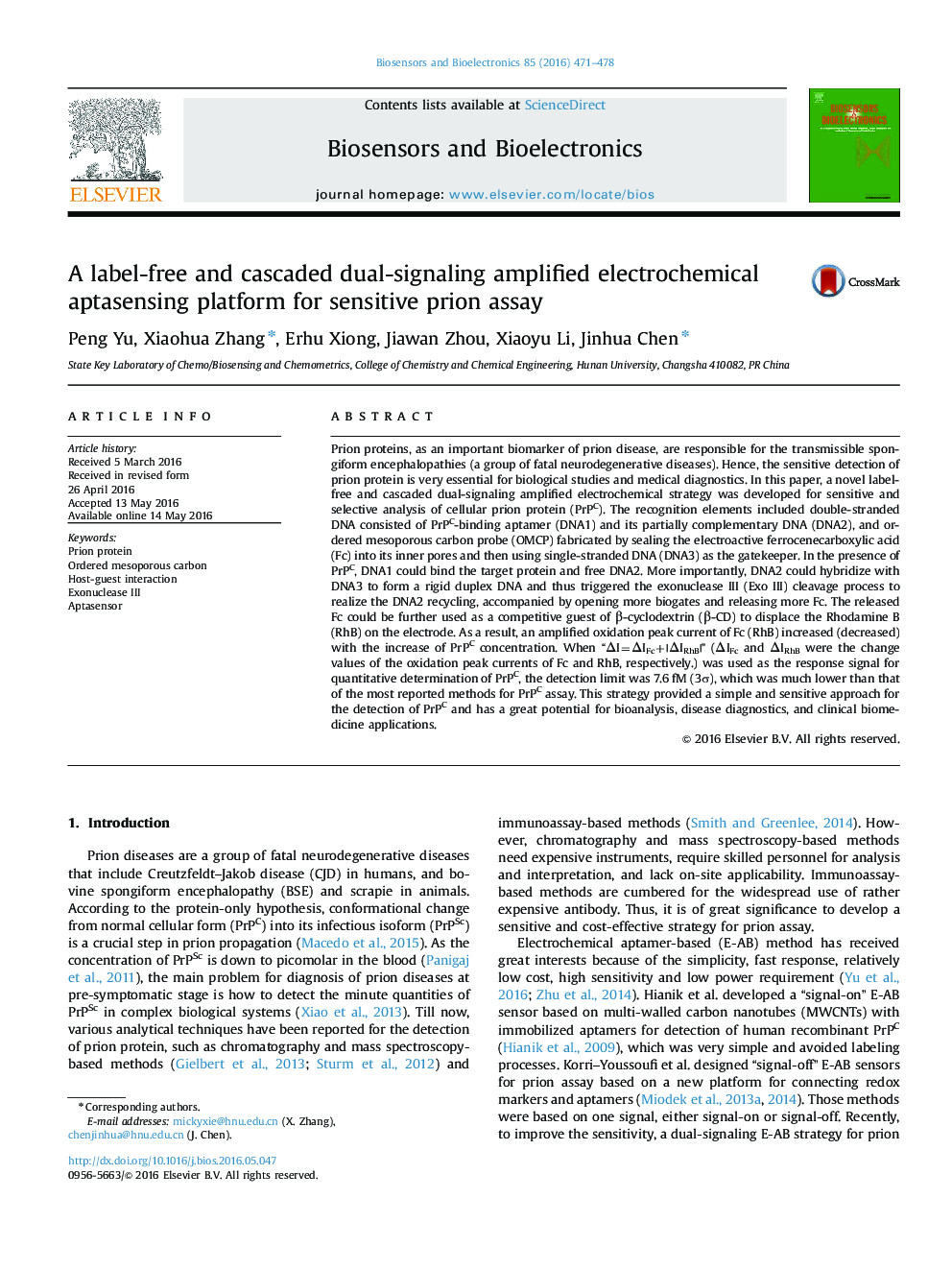| Article ID | Journal | Published Year | Pages | File Type |
|---|---|---|---|---|
| 7230439 | Biosensors and Bioelectronics | 2016 | 8 Pages |
Abstract
Prion proteins, as an important biomarker of prion disease, are responsible for the transmissible spongiform encephalopathies (a group of fatal neurodegenerative diseases). Hence, the sensitive detection of prion protein is very essential for biological studies and medical diagnostics. In this paper, a novel label-free and cascaded dual-signaling amplified electrochemical strategy was developed for sensitive and selective analysis of cellular prion protein (PrPC). The recognition elements included double-stranded DNA consisted of PrPC-binding aptamer (DNA1) and its partially complementary DNA (DNA2), and ordered mesoporous carbon probe (OMCP) fabricated by sealing the electroactive ferrocenecarboxylic acid (Fc) into its inner pores and then using single-stranded DNA (DNA3) as the gatekeeper. In the presence of PrPC, DNA1 could bind the target protein and free DNA2. More importantly, DNA2 could hybridize with DNA3 to form a rigid duplex DNA and thus triggered the exonuclease III (Exo III) cleavage process to realize the DNA2 recycling, accompanied by opening more biogates and releasing more Fc. The released Fc could be further used as a competitive guest of β-cyclodextrin (β-CD) to displace the Rhodamine B (RhB) on the electrode. As a result, an amplified oxidation peak current of Fc (RhB) increased (decreased) with the increase of PrPC concentration. When “ÎI=ÎIFc+|ÎIRhB|” (ÎIFc and ÎIRhB were the change values of the oxidation peak currents of Fc and RhB, respectively.) was used as the response signal for quantitative determination of PrPC, the detection limit was 7.6 fM (3Ï), which was much lower than that of the most reported methods for PrPC assay. This strategy provided a simple and sensitive approach for the detection of PrPC and has a great potential for bioanalysis, disease diagnostics, and clinical biomedicine applications.
Related Topics
Physical Sciences and Engineering
Chemistry
Analytical Chemistry
Authors
Peng Yu, Xiaohua Zhang, Erhu Xiong, Jiawan Zhou, Xiaoyu Li, Jinhua Chen,
